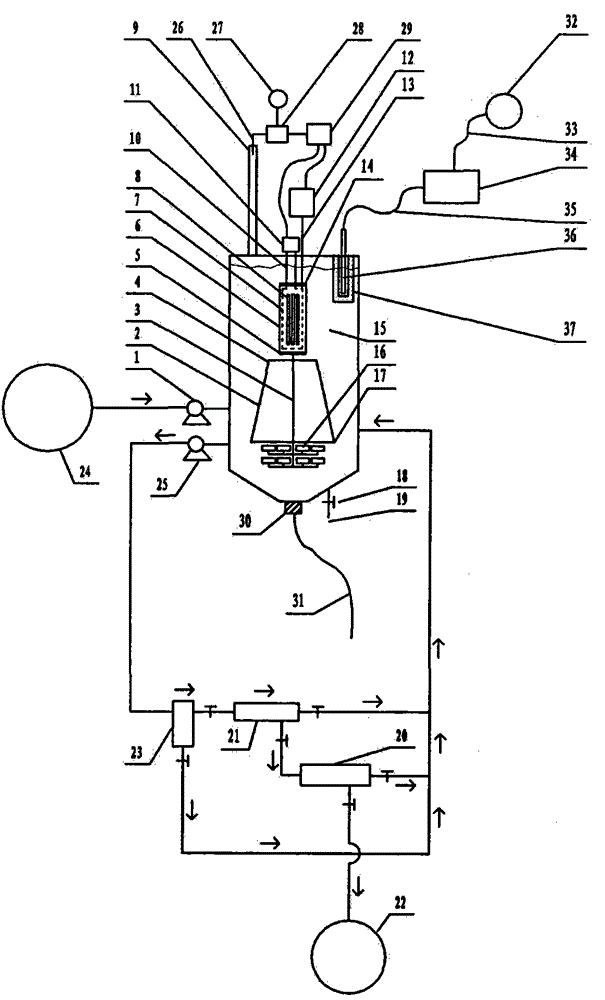Large-capacity wastewater degradation reactor with automatic detection of photocatalyst agglomeration main factor parameters
A technology of wastewater degradation and photocatalysis, applied in chemical instruments and methods, water/sewage multi-stage treatment, water/sludge/sewage treatment, etc., can solve the problem that titanium dioxide particles are prone to agglomeration, affect the photocatalytic efficiency, and cannot detect the reaction immediately. Problems such as the situation of device reunion
- Summary
- Abstract
- Description
- Claims
- Application Information
AI Technical Summary
Problems solved by technology
Method used
Image
Examples
Embodiment Construction
[0103] exist figure 1 In the shown embodiment of the case, the structure of the reactor includes a container, and the outline of the container is in the shape of a cube, a cuboid, a cylinder, an ellipse, a polygon, a sphere or an ellipsoid. The bottom position of the inner cavity of the container is equipped with many microporous aeration heads 16, and the quartz tube 6 is installed on the inner cavity position of the container, and the two ends of the quartz tube 6 are equipped with seals. The plugging caps 5 and 14 are respectively provided with ventilation ports on the plugging caps 5 and 14 located at both ends of the quartz tube 6, and the electrodeless ultraviolet lamp 8 is rod-shaped, ring-shaped, spherical, or starfish-shaped. or sea urchin shape, the number of the electrodeless ultraviolet lamp 8 is at least one, and the number of the electrodeless ultraviolet lamp 8 is at least one above the inside of the quartz tube 6, and the air pump 12, the air pump 12 is install...
PUM
| Property | Measurement | Unit |
|---|---|---|
| pore size | aaaaa | aaaaa |
| size | aaaaa | aaaaa |
| particle size | aaaaa | aaaaa |
Abstract
Description
Claims
Application Information
 Login to View More
Login to View More - R&D
- Intellectual Property
- Life Sciences
- Materials
- Tech Scout
- Unparalleled Data Quality
- Higher Quality Content
- 60% Fewer Hallucinations
Browse by: Latest US Patents, China's latest patents, Technical Efficacy Thesaurus, Application Domain, Technology Topic, Popular Technical Reports.
© 2025 PatSnap. All rights reserved.Legal|Privacy policy|Modern Slavery Act Transparency Statement|Sitemap|About US| Contact US: help@patsnap.com

